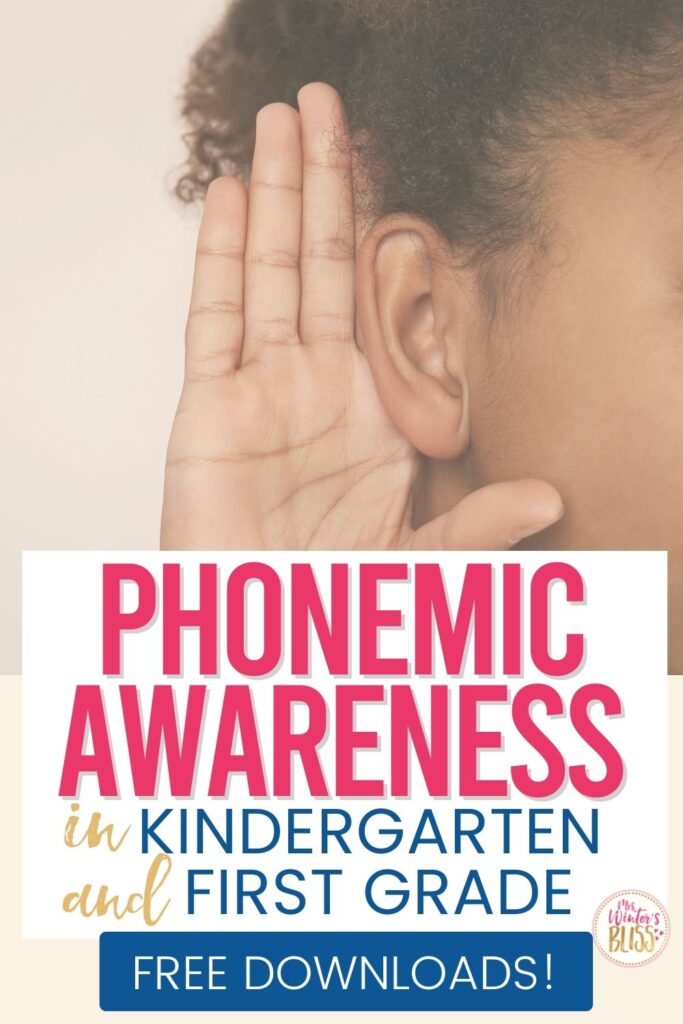
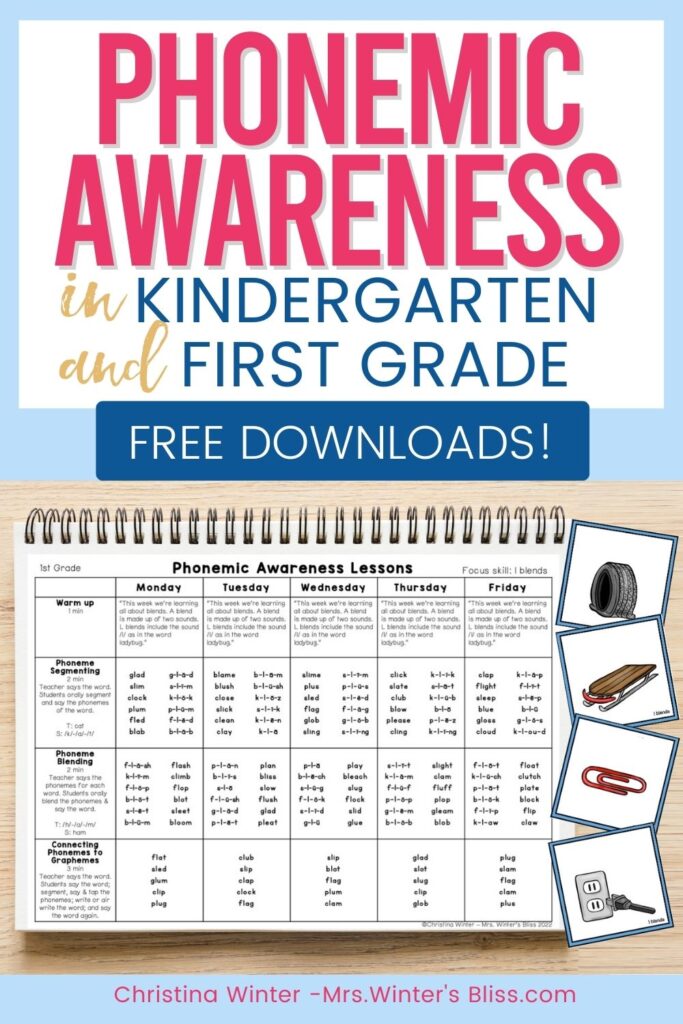
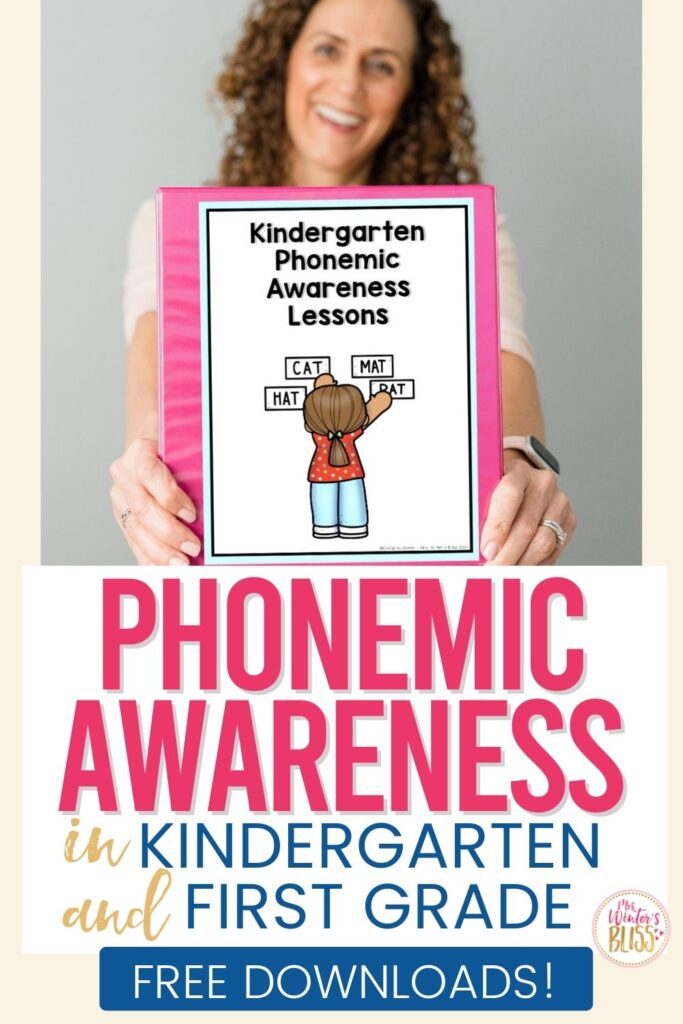
In this post, I answer the question “What is phonemic awareness?” and explain how is it different from phonics instruction. I share details about my science of reading-aligned phonemic awareness lesson plans for kindergarten and first-grade students, a resource that has ALL you need to bring effective, data-driven, small-group phonemic awareness instruction to your classroom. Be sure to download the FREE phonemic awareness lesson plans that you can begin using with your small groups right away!
Small group instruction is a key way we can support our students and help increase achievement. In my last post, I shared information to help you implement small groups in your k-2 classroom and identified literacy skills that should be taught in small group. These skills included phonemic awareness, phonics, fluency, vocabulary, and comprehension.
While many of you found this information helpful, you wanted more! You requested a specific plan for assessing and teaching these skills. So today I am focusing on the most foundational skill students need to learn in order to become accurate and automatic read: Phonemic Awareness.
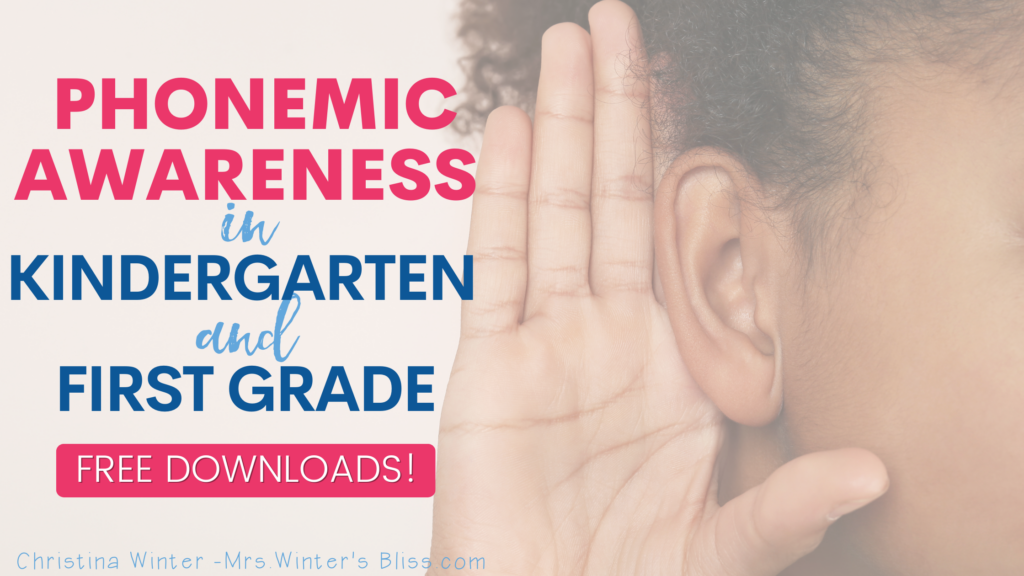
In this post, I answer the question, “What is phonemic awareness?” and explain how it is different from phonics instruction. I share details about my NEW science of reading-aligned phonemic awareness lesson plans for kindergarten and first-grade students, a resource that has everything you need to bring effective, data-driven small-group phonemic awareness instruction to your classroom. Finally, I leave you with FREE phonemic awareness lesson plans you can begin using with your small groups right away!
What is Phonemic Awareness?
Phonemic awareness is the knowledge that spoken language is made up of sound units, called phonemes. This includes the ability to blend sounds, as well as isolate, segment, delete, add, and substitute phonemes within words. When students have phonemic awareness they can do these things with both spoken and written words.
Examples of phonemic awareness include:
- recognizing words that begin with the same sound
(“Run, Rake, and Risk all have /r/ at the beginning.”) - isolating and saying the first or last sound in a word
(“The beginning sound of bat is /b/.” “The ending sound of cat is /t/.”) - combining, or blending the separate sounds in a word to say the word
(“/t/, /a/, /g/ – tag.”) - breaking, or segmenting a word into its separate sounds
(“up – /u/, /p/.”)
Phonics vs. Phonemic Awareness
Phonics and Phonemic Awareness are two terms that are often confused or used interchangeably. While both components are essential for learning to read, they are not the same thing.
Phonemic awareness is oral and auditory. It focuses on the sounds in words. Phonics instruction is visual AND auditory. The focus of phonics instruction is letter-sound relationships, also known as phoneme-grapheme correspondence.
When you add graphemes to phonemic awareness lessons, it becomes a phonemic awareness lesson AND a phonics lesson at the same time. Studies have found that lessons like this, ones that integrate letters (graphemes) into phoneme instruction have a greater effect on phonemic awareness, decoding, and spelling than lessons that did not include graphemes.
When Should I Teach Phonemic Awareness?
Teaching phonemic awareness in small groups is most effective. It allows you to closely monitor student responses, provide positive, corrective feedback, and scaffold instruction as necessary. Whole group or one-on-one instruction was also found to be effective, just not as effective as small group instruction.
Phonemic Awareness Lesson Plans for Kindergarten and 1st Grade
Today I’m thrilled to share with you my Science of Reading-aligned Phonemic Lesson Plans for Kindergarten and First Grade students. These research-based lesson plans have EVERYTHING you need to bring effective phonemic awareness instruction to your small groups!
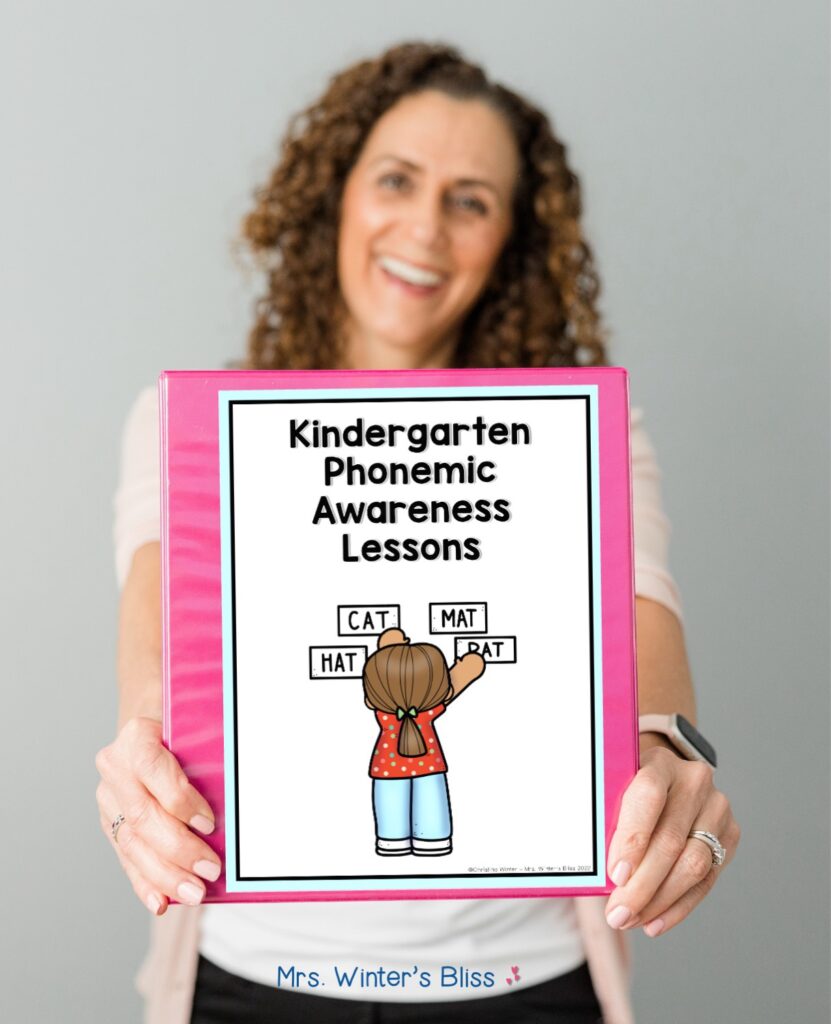
Let’s take a closer look at all that is included in these resources…
Phonemic Awareness Lesson Plans Aligned to a Scope and Sequence
With this resource, you’ll get lesson plans laid out in a weekly format.
Each lesson plan includes a warm-up for the target skill and three activities.
- Phoneme Segmenting: students practice breaking apart each word and identifying each phoneme
- Phoneme Blending: students hear a sequence of phonemes and put them together to identify the word
- Connecting Graphemes to Phonemes: students practice connecting the phonemes in a spoken word to the letters (graphemes) that represent those sounds.
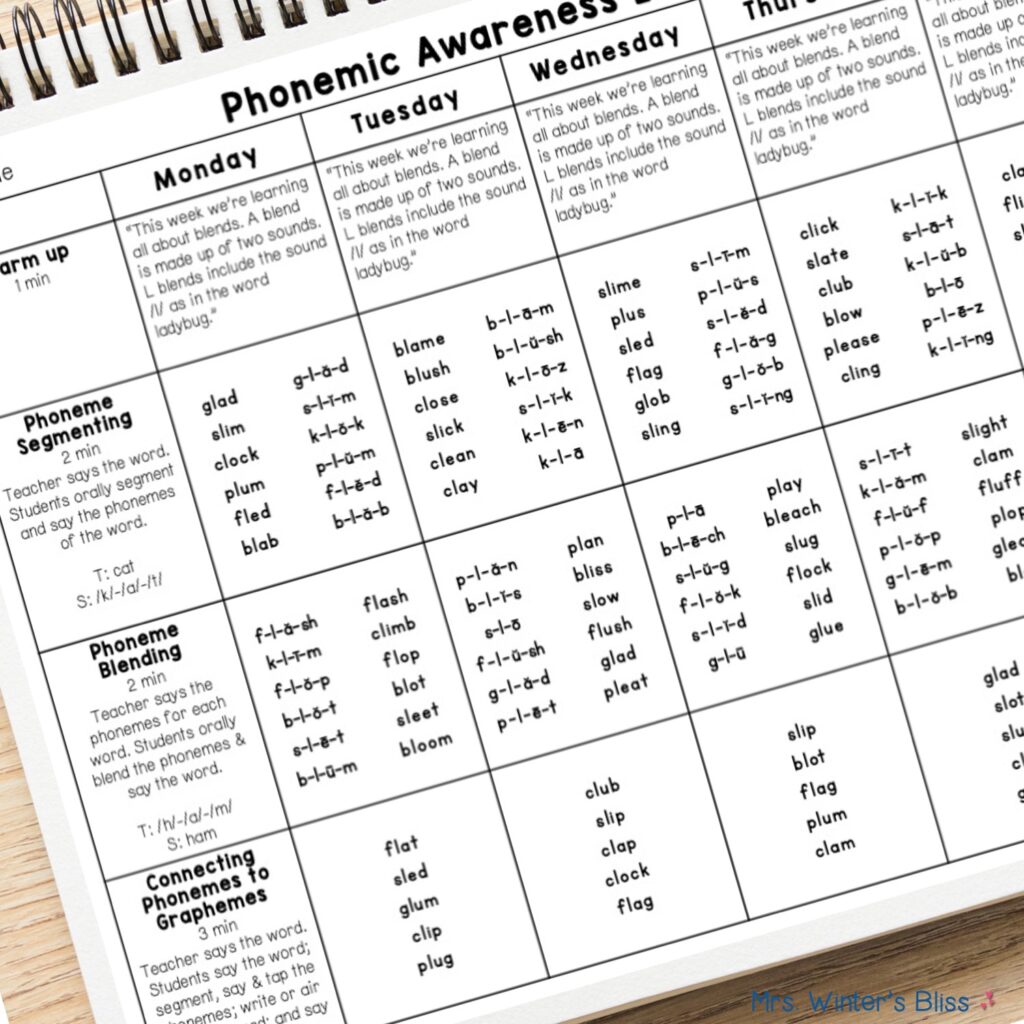
These tasks were carefully selected for the lessons because of the direct transfer of these skills to reading and spelling. The words used in the lessons include the key focus skill, but there are also review words built to give students extra practice and review needed for mastery. Graphemes have been intentionally incorporated into the phonemic awareness activities because we know this has a greater effect on students’ reading and spelling development than if they only have auditory Phonemic Awareness instruction.
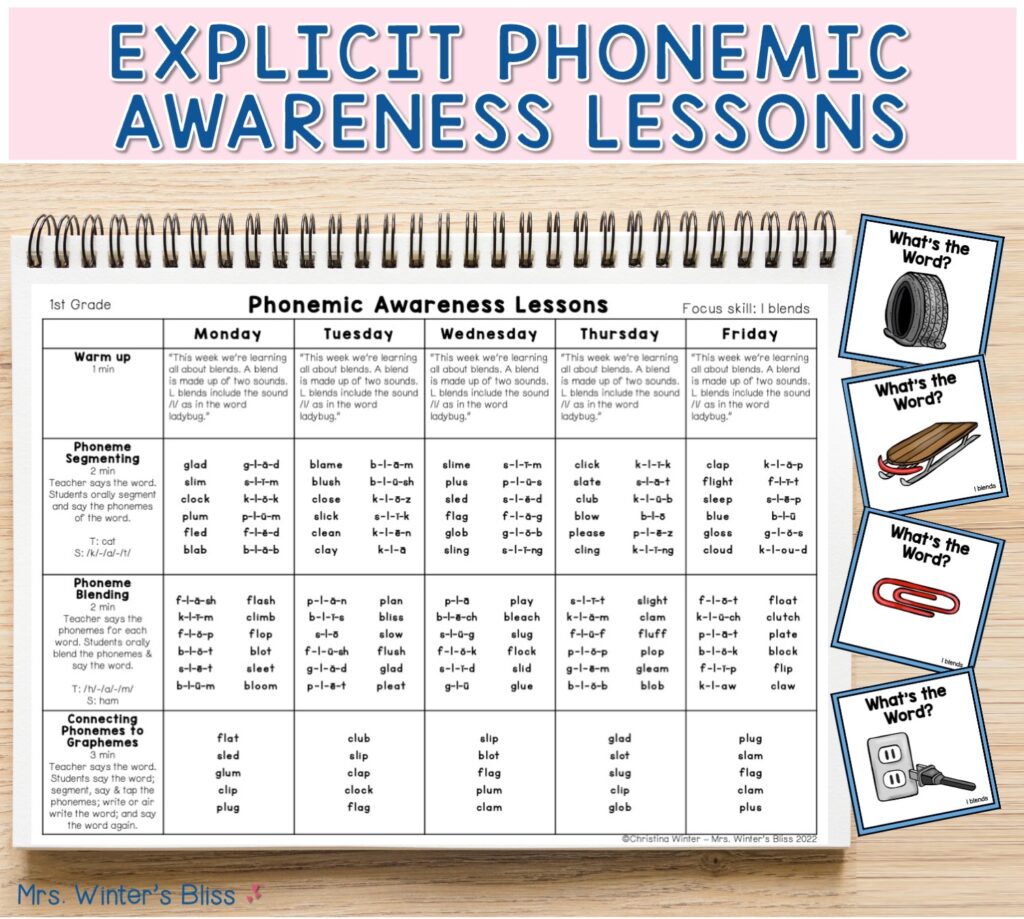
Note that the kindergarten lessons do start a little differently. For the first couple of weeks, the lessons focus on letters. Students work on isolating beginning and ending sounds, as well as the visual skills using the grapheme cards.
All of the lessons follow a SoR-aligned scope and sequence (included in the resource) that is based on work from Wiley Blevins and his book, A Fresh Look at Phonics.
Picture Word Mats
The picture word mats provide a visual representation of the words in the Connecting Phonemes to Graphemes section. This support helps students to build meaning of the words.
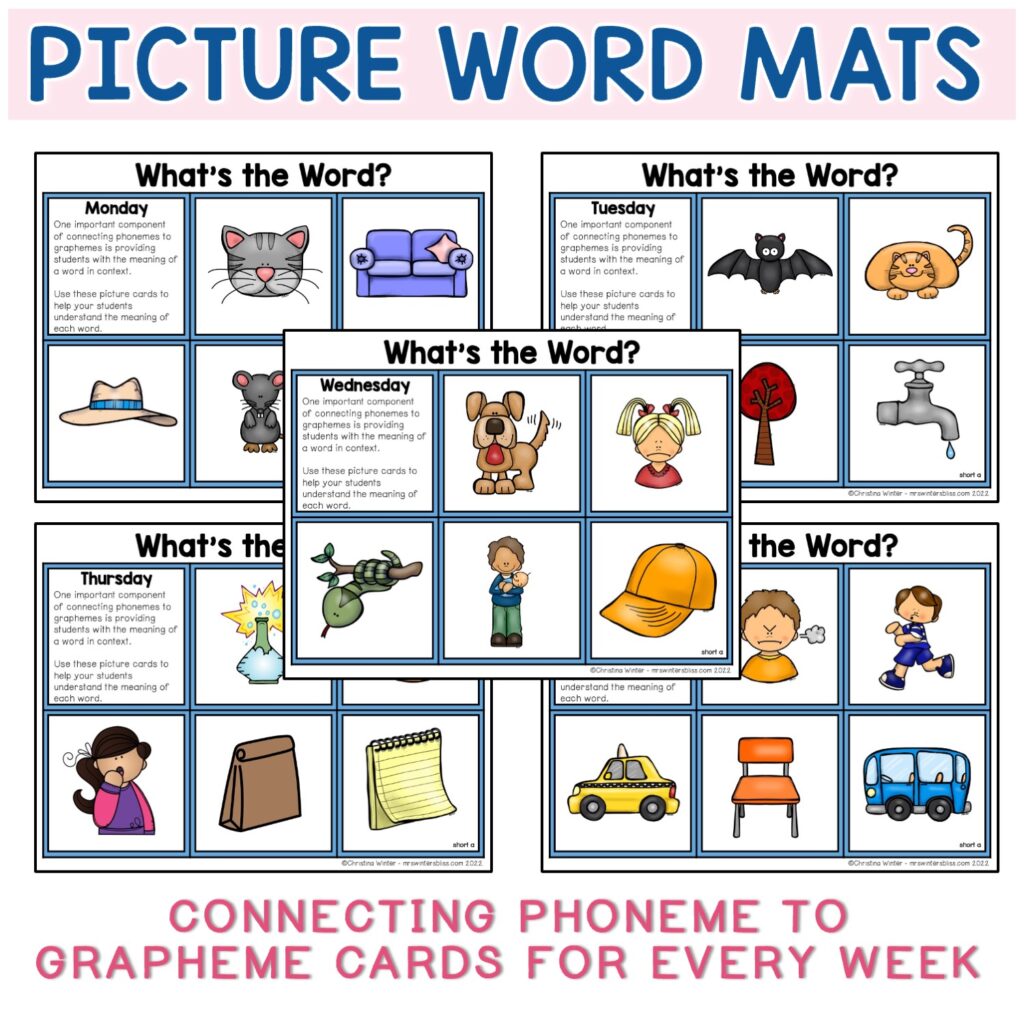
Screener Assessments
We know assessment is a KEY component to providing effective, targeted small group instruction. With this resource, you’ll get a two-part screener for each unit that will identify whether each student can segment and blend phonemes, as well as a spelling inventory assessment that would be given whole-group. The assessments help you identify where in the scope and sequence you should begin your instruction and ensures your small group instruction is meeting the true needs of your students.
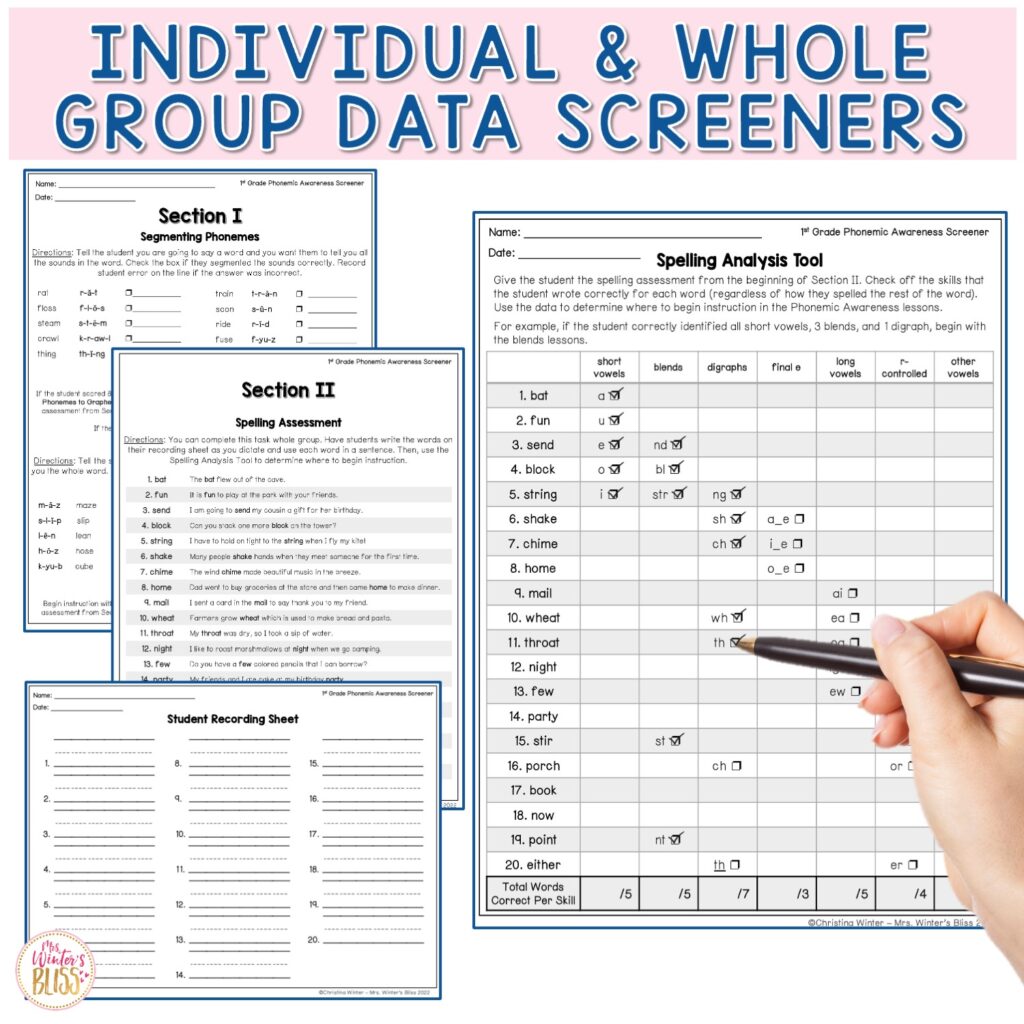
Class Data Tracker
The class data tracker is a place to record the skills your students have mastered in the scope and sequence. You will be able to see your entire class data at a glance. Use this information to create your small groups and ensure you are providing targeted instruction. It is also a helpful tool for discussing students’ progress at parent-teacher conferences, data meetings, and more! Simply enter the date as students become proficient with each skill to track the growth of your class.
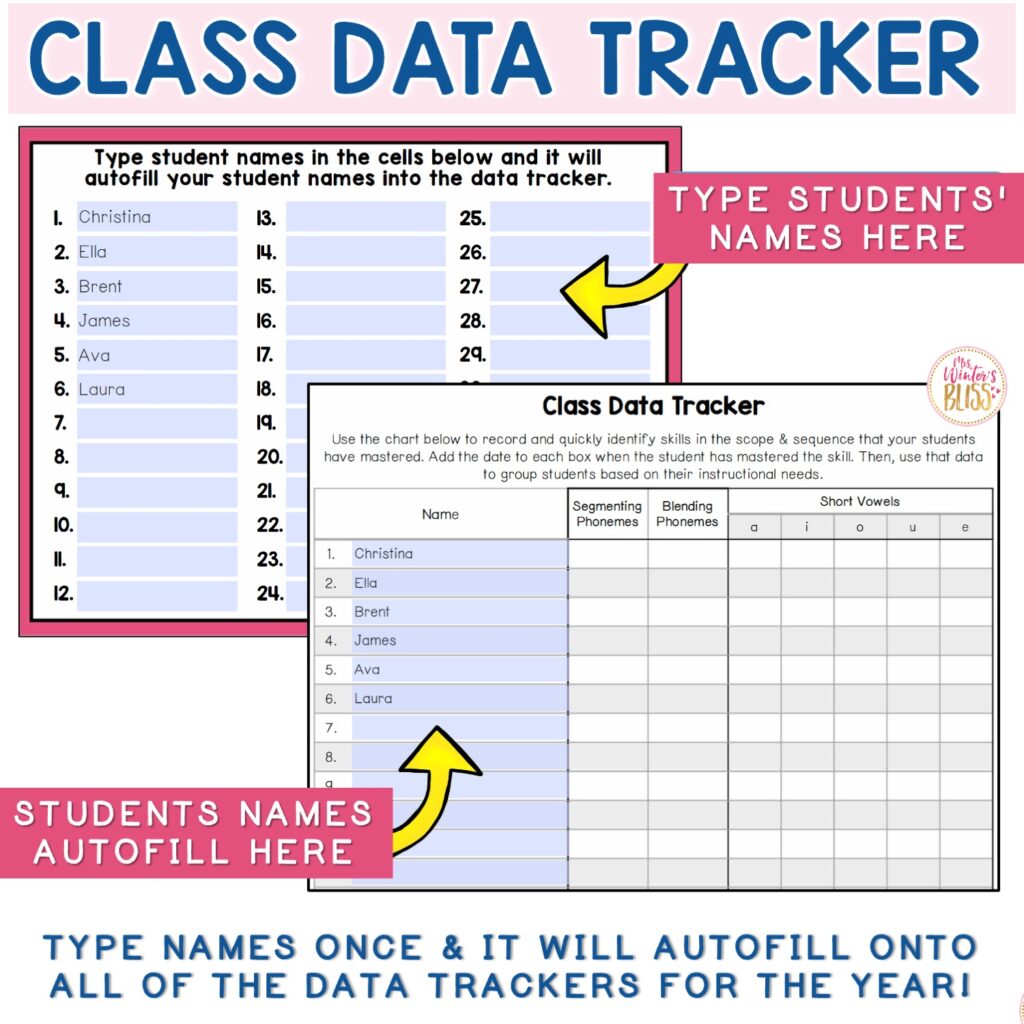
Are you eager to begin providing your students with effective phonemic awareness instruction? To help you get started I am excited to share 5 weeks of FREE phonemic awareness lesson plans! This FREE download includes 5 weekly lesson plans and word cards for ALL of the short vowels. Grab them here.
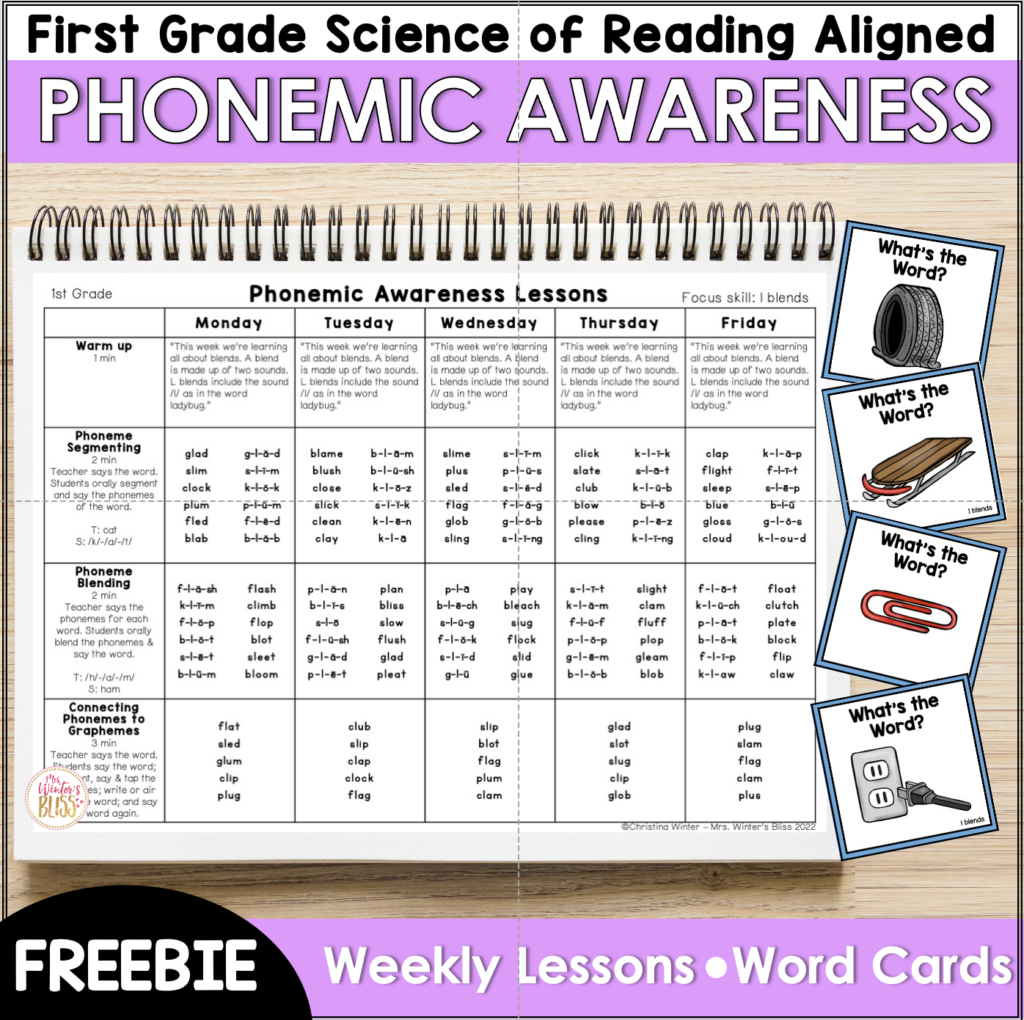
Phonemic Awareness is the most foundational skill students need in order to learn to read. I hope the information and resources I have shared today will help to bring more effective phonemic awareness instruction to your small groups and classroom!
-
Sale Product on sale
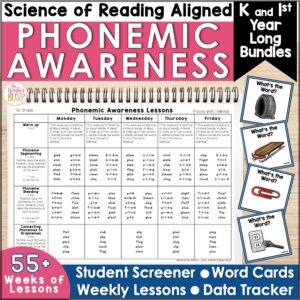 Kindergarten & 1st Grade Phonemic Awareness Yearlong Curriculum – BUNDLEEarn 0 Reward Points
Kindergarten & 1st Grade Phonemic Awareness Yearlong Curriculum – BUNDLEEarn 0 Reward Points$50.00Original price was: $50.00.$37.50Current price is: $37.50. -
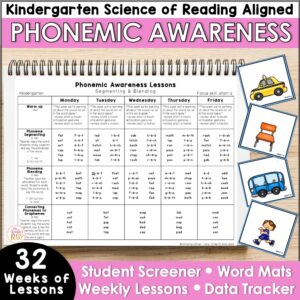 Kindergarten Phonemic Awareness Yearlong Curriculum – Lesson Plans, Screeners & More!Earn 0 Reward Points
Kindergarten Phonemic Awareness Yearlong Curriculum – Lesson Plans, Screeners & More!Earn 0 Reward Points
$25.00Rated 5.00 out of 5 based on 2 customer ratings -
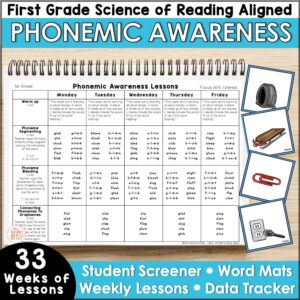 1st Grade Phonemic Awareness Yearlong Curriculum – Lessons Plans, Student Screener & More!Earn 0 Reward Points
1st Grade Phonemic Awareness Yearlong Curriculum – Lessons Plans, Student Screener & More!Earn 0 Reward Points
$25.00Rated 4.90 out of 5 based on 10 customer ratings
–PIN for LATER–










